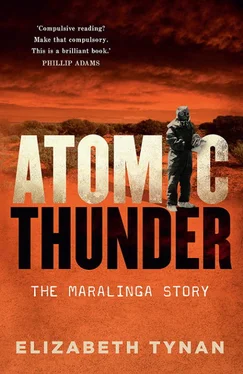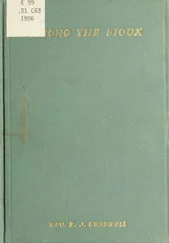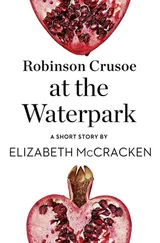Soon after agreeing to provide Monte Bello to the British for atomic testing, the Australian Government realised they needed to formally exclude people from the test site. Although Monte Bello was remote and rarely visited, naval activity in the area could provoke curiosity. The odd nosy boatie might just turn his rudder in the general direction to have a bit of a look. To head off this possibility, the Defence (Special Undertakings) Act 1952 passed through federal parliament, making unauthorised entry illegal. At first, the Act embraced only Monte Bello, but it later covered Emu Field and Maralinga (and later still the US signals monitoring station at Pine Gap), effectively excluding citizens by law from portions of Australian territory. The prohibited area extended over all the Monte Bello Islands and their surrounding waters, and south to Barrow Island. The Act was passed quickly in June 1952 – so quickly, in fact, that it was alleged that Australia had accidentally prohibited areas outside the country’s territorial limit, over which it had no jurisdiction. Both the UK Foreign Office and the Commonwealth Relations Office (CRO) believed that it extended at least 32 kilometres outside Australia’s territory. The UK had been burned with disputes in the past over maritime boundaries and wanted the legislation amended to avoid future embarrassment. Despite their concern, it wasn’t.
So the inexorable process of turning Australia into a central player in the accelerating international nuclear weapons proliferation began with a combination of speed and a small but telling element of ineptness. The test location was an unassuming group of islands in a remote part of the nation, unknown to most Australians. Monte Bello is an archipelago of 174 small islands about 130 kilometres from the strikingly beautiful Pilbara coast, where the mining town of Karratha was established in the 1960s. The total land area of the islands is only 22 square kilometres, and they lie 20 kilometres north of Western Australia’s second largest island, Barrow Island, best known for its high conservation value and fossil fuel reserves. The limestone and sand Monte Bello Islands are mostly low in the water and covered with scrubby vegetation. The British chose Trimouille Island for the first test in 1952, then Alpha and Trimouille for the two Mosaic tests in 1956. Three atomic devices were tested at Monte Bello, one of which was so big that it sent a radioactive cloud over the entire Australian continent and created a cloud of suspicion about its true nature that took many years to clear.
Penney was happy enough with Monte Bello, under the circumstances. It was no better than third choice (after America and Canada), but it would do, and time was getting away. He selected the UK rocket scientist Dr LC Tyte as planning director for Hurricane, with the ballistics expert Charles Adams as his deputy. It was essentially a maritime operation, and Rear Admiral Arthur Torlesse from the Royal Navy was appointed to command the ships, while the Royal Australian Navy supplied patrol ships. Australia contributed extensively to the preparations. When the British scientific staff arrived at Monte Bello, they were amazed by the systems of roads on both Trimouille Island and nearby Hermite Island, where the field laboratories were built, as well as the network of buildings and laboratories.
Operation Hurricane was specifically designed to detonate a nuclear device from 2.7 metres below the waterline in the hold of a ship. Britain was a maritime nation with many ports. The British authorities were keen to find out what would happen if an atomic bomb was detonated in a port, a scenario that would radioactively contaminate a large volume of water. Not even the Americans had done this sort of test before. Highly contaminated water would rise up in a column upon detonation, and it would have to come down again. The British readied themselves to measure and analyse when, where and how this would happen. HMS Plym , a relatively new 1390-tonne frigate that was surplus to requirements after the war, steamed all the way from the UK carrying in its belly the framework for an atomic device. Plym was part of a Royal Navy flotilla that included four other vessels. She came the long way, around the Cape of Good Hope, because the narrow Suez Canal was deemed too risky. The plutonium heart of the device came separately, by seaplane, via the Mediterranean, the Middle East and Asia. At the end of her long voyage, the doomed Plym was anchored in 12 metres of water about a kilometre off the west coast of Trimouille Island.
The atomic device was detonated at 8 am on 3 October on Penney’s orders. Hurricane was a plutonium-based implosion weapon, using 7 kilograms of plutonium manufactured at Wind-scale in the UK. Penney had started to design it in 1947, when he joined the GEN.163 committee. The device was expected to have an explosive yield of 30 kilotonnes, although in the event its yield was 25 kilotonnes. Penney and Torlesse watched anxiously from the Operation Hurricane command ship aircraft carrier HMS Campania , anchored about 5 nautical miles to the southwest. The other ships were Narvik , Zeebrugge and Tracker . The Australian party was watching from Narvik .
What Penney saw through his binoculars must have filled him with a mixture of relief and awe. His atomic device worked. Observations showed that an atomic fireball emerged 23 microseconds after detonation, almost obliterating the frigate. A vast column of water, approximately 1100 metres across and 170 metres high, rose up alongside the atomic cloud. Twenty-four hours after the explosion radioactivity was detected at an altitude of 3000 metres between Port Hedland and Broome. The mushroom cloud was a kind of deformed ‘S’ shape, notably different from the normal symmetrical shape.
Aside from the atomic weapon test itself, a huge variety of experiments was conducted to examine the effects of an atomic blast on equipment and infrastructure. These were known under the collective term target response studies and were of both military and civilian interest. For example, the authorities sought to test how well protected humans might be if they sheltered in various kinds of trenches and bunkers. Tests were also conducted on the personnel who entered the contaminated areas after the blast. As the director’s report on Operation Hurricane stated, ‘Some men needed 5 showers to pass the (very low) tolerance at final monitoring’. Guinea pigs and rabbits were placed in the blast zone for zoological testing. These tests clearly showed that the biggest danger came from ‘invisible’ fallout rather than ‘black’ fallout, pointing to an insidious risk.
The Hurricane test showed that Penney’s design worked when delivered in the hold of a ship in port, but this was a long way from being dropped from an aircraft, the most likely delivery system at the time. Many more tests were needed. After further tests during Operation Buffalo at Maralinga in 1956, the weapon acquired the name Blue Danube, and it subsequently became Britain’s first operationally deployed nuclear weapon. Hurricane was an important step. It enabled Penney and colleagues to refine the design and also provided tangible evidence of the UK’s (somewhat belated) return to strength and prestige after the depredations of the war. And, of course, most significantly Operation Hurricane raised the UK into the nuclear-armed club, where it remains to this day.
Howard Beale, the Australian minister for Supply, who soon became the public face of the tests in Australia, found out about the first test only a short time before it was scheduled. In the lead-up to the test program, Menzies acted unilaterally, and Beale was kept in the dark. Beale twice, unknowingly, misled parliament by saying that there were no plans for British tests in Australia, in June and October 1951. As Menzies’ biographer AW Martin put it, ‘Menzies’ unquestioning acceptance of the British insistence on secrecy, while fitting with his current Cold War fears and appreciation of American attitudes, created some strange situations. One of the strangest was his refusal for many months to admit his Minister of Supply, Howard Beale, into the secret’.
Читать дальше












